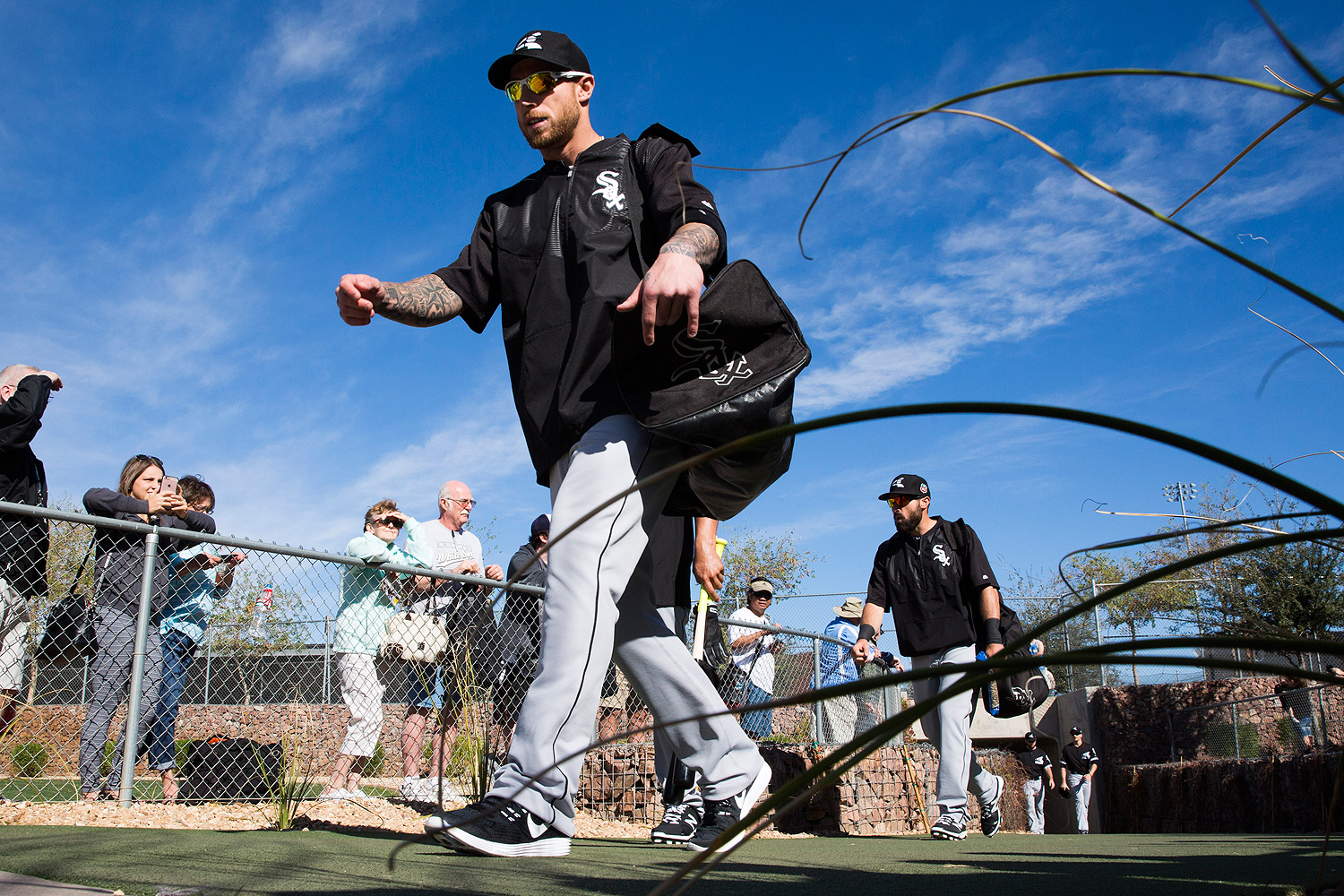Just like last year, expect all the attention in Chicago sports this summer to be devoted to the Cubs. They won 97 games last year; they got considerably better over the offseason; and it's reasonable to expect that a couple of their good young players, Addison Russell and Jorge Soler, could contribute more at the plate. They're a deep, young, well-constructed team, and they're going to be very, very good.
Then there are the White Sox.
The numbers are grim
Last year, per FanGraphs's Wins Above Replacement calculations, all of the White Sox's position players were worth a collective 3.1 WAR. Or: 0.1 WAR more than Abreu alone, or just one-third of Mike Trout or Bryce Harper. Ten players in Major League Baseball, with a qualifying number of at-bats, had negative WAR in 2015—meaning they were worse than you would expect from a typical "replacement" player, like a league-minimum free agent or minor-league veteran. Three of them played for the White Sox.
And that doesn't include Adam LaRoche, who just missed the number of qualifying plate appearances; he was the worst player on the team, at -1.4 WAR. It doesn't include Carlos Sanchez, who hit .224 with an abysmal .268 on-base percentage in 420 at-bats. Five White Sox who played at least 120 games finished with negative WAR, which is, again, the baseline for a starting major league baseball player.
Granted, WAR includes numbers you might take with a grain of salt, like base running (27th overall as a team) and an overall defense metric (30th). It is worth wondering, though, if the White Sox's terrible fielding numbers help explain why their very good pitching staff had the third-highest batting average on balls in play in 2015.
But they also had no power (28th), didn't get on base (27th), and in what's ultimately the most important statistic, didn't score runs (28th) Nor is it just FanGraphs. Baseball Prospectus has its own version of that statistic, Wins Above Replacement Player; the White Sox were the only team in baseball that got fewer than 1.0 WARP at five different positions.
And yet …
So I was surprised when ESPN baseball writer Christina Kahrl told me that she wouldn't count the White Sox out of the playoffs in 2016. It's not a high honor—she would only count out the A's—but she's not alone.
FanGraphs projects them to finish 81-81, tied with the Tigers and three games behind the Indians, projected to be the best team in the A.L. Central. Baseball Prospectus projects them to finish 82-80, ten games behind the Indians, but three ahead of the Twins. If you want a less data-driven approach, Sports Illustrated's Jonah Keri puts them in a "virtual tie" for second with the Tigers and Indians, and not too far from the Royals. (The projection systems don't like the Royals, but they didn't last year, either, and we know how that turned out.)
How’d the White Sox pull off such generous forecasts? By adding a handful of competent-to-good veterans at no great cost. Todd Frazier was the big acquisition, traded for three borderline prospects in order to become the first good third baseman the team has had in a decade, the equivalent of 2006 Joe Crede. The rest of their additions are … fine. If you're starting from multiple players who were worse than replacement level, adding wins by, well, replacing them isn't hard.
This is still a flawed team. FanGraphs doesn't project anyone on the team to have an on-base percentage over .350. Three of their below-replacement regulars are still likely to start—Avisail Garcia, Melky Cabrera, and Adam LaRoche—and some of their improvement is predicated on the mathematical idea that they just can't be as bad as they were in 2015. The Sox are projected to improve a mighty 11.9 WAR on offense from last year; 3.8 of that comes from the mathematical assumption that Garcia, Cabrera, and LaRoche just aren't as terrible as they were last year, and in essence will regress to the mean.
If they don't, there's not much on the bench; like last year, it's still a thin team on offense. The sabermetrics team at NEIFI (Normalized Empirical Individual Forecasting Index) used its own projection system to calculate "the number of wins each team is losing due to the presence of garbage on the roster," i.e. "[below] the halfway point between replacement level and average." The White Sox have the worst total in the American League at 4.72 wins, and the second-worst in baseball, the Phillies, at 5.84. And the Phillies are in full-on teardown mode; the White Sox, in theory, are trying to compete for a playoff spot.
And yet … they have a chance. It's a shallow division of average teams, won last year by a team that wasn't projected to be all that good. They're the reverse Cubs: instead of rebuilding, they're reloading. It's not sexy. It's not even all that interesting. But it might—might—be enough.



